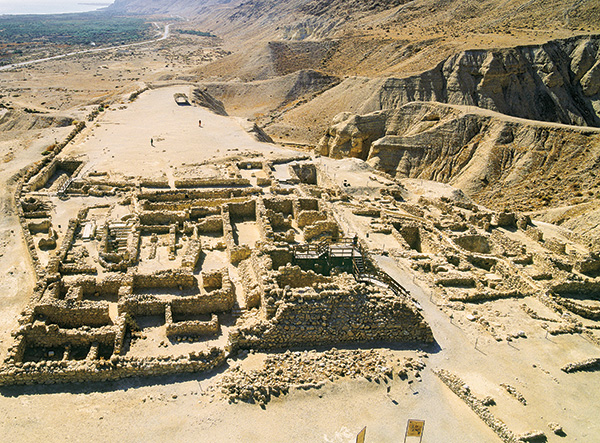
I want to say here and now how grateful I am to the original team of Dead Sea Scroll scholars who failed to publish the bulk of the scrolls for nearly 40 years and refused to let other scholars see them in the meantime. But for them, I would never have had the exciting life I have led as one of the first generation of scholars to study the full corpus of the scrolls after their release.
The earliest discovery of Dead Sea Scrolls occurred some six months before I was born. I became fascinated by the study of the scrolls in the 1960s when they were a little-known and underappreciated group of documents. I remember a comment someone made to me: “Why do you want to go into a field where you can’t see all the materials?”
Since then, everything has changed. No one asks me today why I chose to study the scrolls. Instead they ask me about different aspects of the scrolls—it seems that everyone knows something about them.
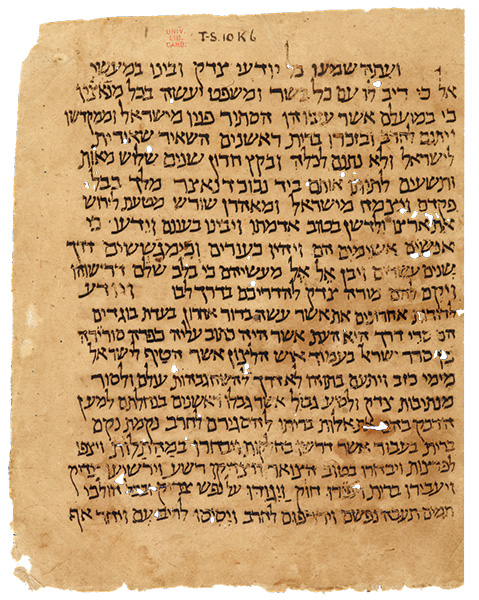
The history of the Dead Sea Scrolls did not actually begin with the famous Bedouin discovery in the caves of Qumran in 1947. Rather, two medieval manuscripts now known as the Damascus Document (formerly the Zadokite Fragments) were discovered by Solomon Schechter, then of Cambridge University, in the Cairo Genizah in Egypt in the late 19th century.a1 Schechter identified them as authored by a Second Temple-period Jewish sect.2 Other copies were later found among the Dead Sea Scroll fragments from Qumran. Only then were scholars able to put these earlier discoveries into context. Schechter was right.
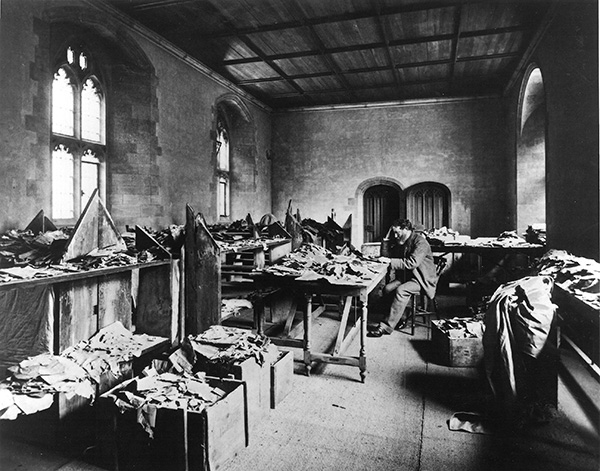
The first seven Qumran scrolls were discovered by Bedouin in 1947 in what was then British Mandatory Palestine. The Israel War of Independence broke out in 1948. When it was over, Jordan was in control of the West Bank where the Qumran caves are located. The Jordanian Antiquities Department immediately set about identifying the caves where the Bedouin had discovered the scrolls and soon thereafter began excavations of the nearby Qumran settlement. In the 1950s, the Bedouin discovered additional fragmentary scrolls in the caves near Qumran. Subsequently the Jordanian Antiquities Department put together an international publication team to publish and interpret the manuscripts.
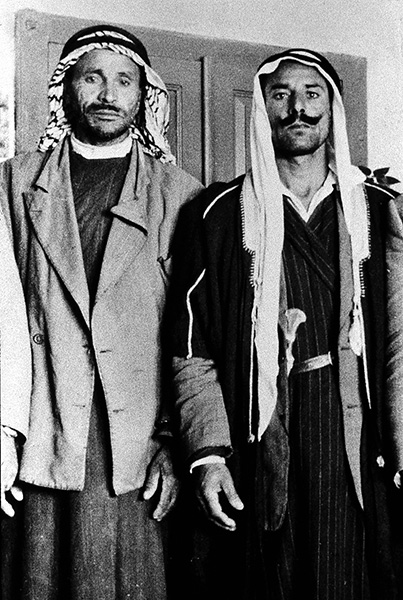
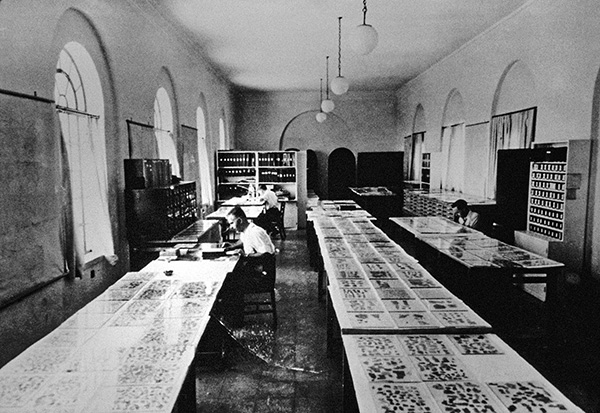
By 1954, the larger, for the most part complete, scrolls from Cave 1 had been acquired by Israel, and much of this collection had been published. The material remaining in Jordanian hands (mostly from the famous Cave 4) was extremely fragmentary, sometimes only 10 percent or less of the original scroll. The Jordanian team assigned to publish them was composed mostly of Catholic priests and Protestants who spent the majority of their time trying to piece together the various snippets into larger pieces of text. They laid out the fragments on long tables and maneuvered them around by matching the parchment and handwriting techniques. They were able to consolidate some 80,000 (sub-)fragments into approximately 20,000 larger fragments.
The team also began publishing the reconstructed scrolls, starting with the easier material, the Biblical texts, but they did not have enough manpower or expertise to make much headway. This work proceeded at a snail’s pace until 1960, when matters got even worse: Their funding ran out. Most members of the team left Jerusalem and headed back home. Although some had assignments for which they were still responsible, some lost interest, died or were otherwise unable to complete their obligations. Moreover, some of the assignments were so vast that even the most well-intentioned scholar could not complete the assignment in a lifetime.
In 1967, as a result of the Six-Day War, Israel gained control of the area of Qumran as well as the Palestine Archaeological Museum (now the Rockefeller Museum) in East Jerusalem, where the scroll team’s fragments had been housed. Nevertheless, the Israel Antiquities Authority left the international team in place and did not interfere in its work. A few members of the team, now headed by Harvard’s John Strugnell,b became more and more insular, regarding the texts as if they owned them. They worked very slowly, saved many of the texts for dissertation topics for their own students and refused to allow outside scholars to see them. By the early 1980s, international pressure convinced them to add a few Israeli scholars to the team.

In 1984, a Biblical archaeology conference was held in Jerusalem at which Israeli scholar Elisha Qimron delivered a paper disclosing a few lines of a foundational text known as MMT (for Hebrew Miqsat Ma`ase ha-Torah) or “Some Principles of the Law.” I will never forget the shock of the audience, myself included, to learn that a text of such great importance had been held back from the scholarly and general public for so many years. It became obvious that there was much exceedingly significant material in the cache of scrolls that was off limits to most of us.

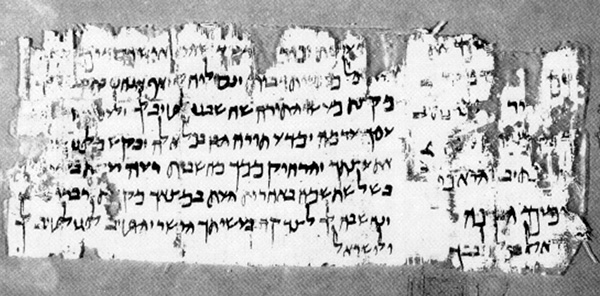
At a Dead Sea Scrolls conference that I had the privilege of organizing at New York University in 1985, Professor Strugnell gave a paper that similarly disclosed the partial contents of a scroll that others had not been able to see. BAR editor Hershel Shanks had attended both the Qimron paper and Strugnell paper. It was after the latter that he initiated a campaign to release photographs of the scrolls for scholarly examination and research.c
Meanwhile other scholars began taking matters into their own hands. Hebrew Union College–Jewish Institute of Religion professor Ben Zion Wacholder and his student Martin Abegg realized that texts could be reconstructed from a concordance that had been prepared by the team and circulated internally for their own research and to a small group of other scholars. The concordance listed each word in the context of its preceding and following words. Using a computer, Wacholder and Abegg reconstructed non-Biblical texts that they had not been permitted to see, and their results were published in several fascicles by the Biblical Archaeology Society (1991–1995).d3
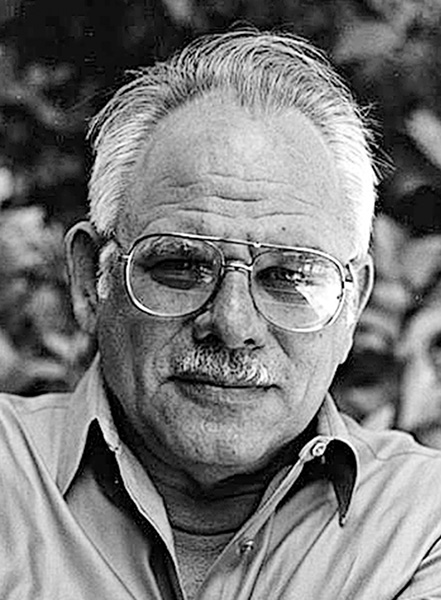
Meanwhile, Professor Robert Eisenman of California State University, Long Beach, obtained photographs of the scroll fragments from an individual who has still not been identified. Eisenman and Professor James Robinson of Claremont Graduate University decided to release them in a facsimile edition, again published by the Biblical Archaeology Society, with an introduction by Shanks.e4 Not long after, William Moffitt, librarian of the Huntington Library in San Marino, California, where a microfilm copy had been deposited for safekeeping, decided to open his copy to the world. The lock had finally been broken.
But Shanks would pay. Professor Qimron had painstakingly prepared a composite text of MMT based on the six partial copies, but he had not published it. Shanks obtained a composite copy and published the Hebrew text in his introduction to Eisenman and Robinson’s Facsimile Edition.5 Qimron sued Shanks for copyright infringement.f In 1993 an Israeli court found Shanks guilty and rendered a $40,000 judgment against him.g The decision was subsequently affirmed by the Supreme Court of Israel.6
Coinciding with all this pressure for the release of the scrolls, Strugnell gave an offensive anti-Semitic interview to an Israeli newspaper which appeared on November 9, 1990.h Amid persistent calls for something to be done, the Israel Antiquities Authority finally decided to remove Strugnell as head of the team, replacing him with Emanuel Tov of the Hebrew University.
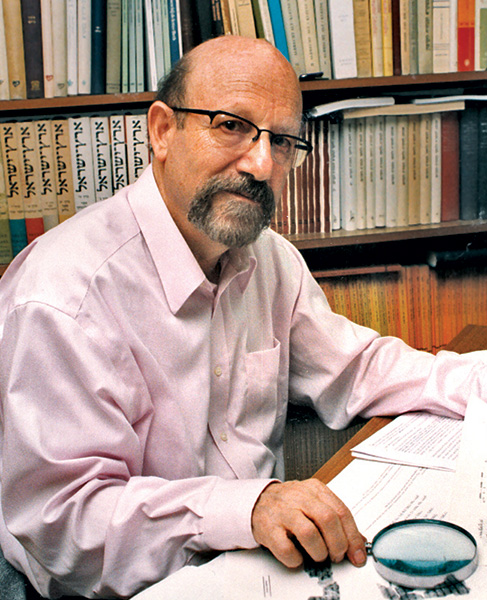
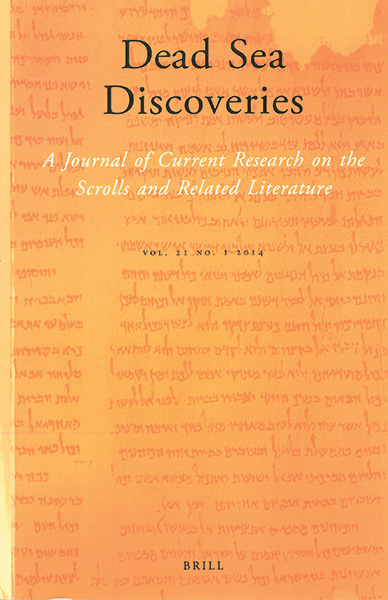
Tov’s first task was to widen the team to more than 60 international and interconfessional scholars and to reorganize the publication process. Between 1991 and 2002, more volumes of the official Discoveries in the Judaean Desert series (DJD) were published than in the preceding 40 years. Tov and his associates also produced an accurate catalog of all the scroll materials to serve as the basis of an ongoing process of producing scholarly editions and translations.i By 2002, every scrap of parchment had been published, including unidentifiable pieces. (Some re-editions have recently been published as well.) Now most of the scrolls have even been digitized and appear on the web.j This sudden release of texts hidden for more than four decades has had a profound effect on scholarship—of the Hebrew Bible, of Second Temple Judaism and of early Christianity.
I think we scholars who are devoting our lives to the study of the scrolls can be grateful for another reason to the initial team of scholars who resisted disclosure of the texts of the scrolls. Without them, it is highly unlikely that the scrolls would have generated such immense public interest, which, in turn, has led to a series of exhibitions, documentaries and conferences that has been of great advantage to the field. And the study of the Dead Sea Scrolls has matured into a full-dress academic discipline with a huge number of publications, from books and monographs to articles in numerous scholarly journals. Two journals are devoted solely to dealing with scholarly issues involving the scrolls.
The first generation of scroll scholars included the original team and a number of their close associates, especially their students, some of whom were incapable of independent scroll research and did not continue to contribute. The next group of scroll scholars was made up of outsiders (like me) who, although they did not have access to the full complement of texts, took up research on the already-published materials. When the editorship of the scrolls shifted to Tov, he added many of this second group to the publication team, as they were skilled in working with the texts and eager to see the publication process completed.
The majority of the next generation of scholars, today’s younger scholars, are students of the students of the original team members who were capable of independent research and of the group of former outsiders added to the team when Tov took over.
During the past 60 years, scholars have come to a consensus on many issues in Dead Sea Scrolls research, but they differ on other issues, as is natural in any field. One such issue is to identify the group of Jews who wrote the sectarian scrolls. The majority view is that they are Essenes.k I have argued that it is important to recognize that their legal system is that of the Sadducees and that their historical origins lie in a group of pious Sadducees.l As can be expected, despite the most informed speculation, some issues will never be resolved simply because there is not enough evidence on these tiny scraps of parchment that were once full scrolls to answer all our questions.
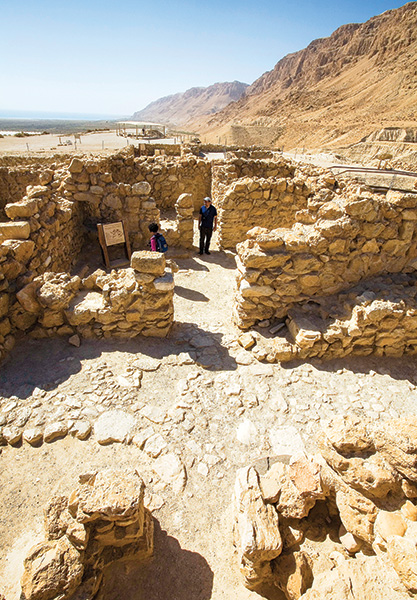
Some far-out theories on other issues have only one or two proponents who often claim that they have not gotten a fair hearing. The truth, however, is they have been heard, and their views have been rejected by their colleagues.m
Some of the other divisive issues involve differing evaluations of the archaeological ruins at Qumran. Almost all scholars agree that the people who hid the scrolls used these buildings and, therefore, that the excavation of the site can be useful in helping to reconstruct the nature of the religious group that hid these sectarian scrolls. Unfortunately, much of the archaeological material still lies buried in unpublished fieldnotes and artifacts (such as pottery). Some are in the basement of the Rockefeller Museum and more are at the École Biblique, the French Biblical and archaeological school in Jerusalem, where they are still being studied. Unfortunately the École’s Father Roland de Vaux, who led the excavation of Qumran, died in 1970. The inability of archaeologists to access the entire corpus from Qumran and to make independent judgments on the material continues to hamper our ability to reach final conclusions on issues raised by both mainstream scholars and those who disagree with them. These archaeological materials should be made available immediately by the École Biblique.
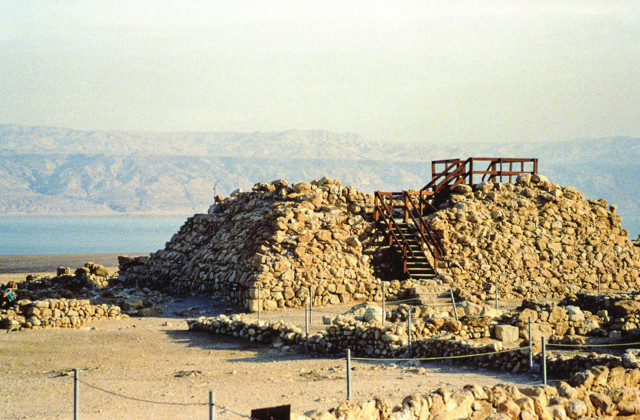
What has been accomplished since 1990? First of all, of course, with few relatively minor exceptions, the Dead Sea Scrolls have been published in first-class scholarly editions. And by Dead Sea Scrolls, I mean not only the scroll library from Qumran, but also some scroll material from this period found at Masada, as well some documents from the Second Jewish Revolt (the Bar-Kokhba revolt) in 132–135 C.E.7
Scientific analysis of the scrolls has also proceeded apace. The parchment has been carbon-14 datedn and DNA sampled; chemical analysis has been undertaken to determine the origin of the water used to prepare the skins; the inks have been analyzed; infrared photographs and multispectral imaging have been used to identify hitherto illegible letters; archaeologists have combed the Qumran site and nearby caves;o experts on coins, glass, textiles and bones have been consulted; and ground-scanning radar has been used to remap the Qumran cemetery. The digitization of the scrolls has been accompanied by new photographs that have made new readings possible. In addition, preservation and conservation projects are underway using the most up-to-date methods.p
Today Dead Sea Scrolls research is a field of its own. Contrary to what many people seem to expect, Dead Sea Scrolls research is not about looking for bombshells among the fragments. This fundamental misconception affected even scholars in the early days when the bootleg editions were being released. In reality, scroll research is a painstaking activity, beginning with the proper evaluation and publication of manuscripts, proceeding to the study of the literary history of the texts, including their relationship to earlier texts of the Hebrew Bible, other manuscripts from Qumran, other Second Temple period compositions and their later reflection in rabbinic literature and in the New Testament. Only after such consideration can the scroll scholar begin to unravel the history of ideas. This is why we are all so proud of the enormous number of monographs that go beyond the publication and translation of the scrolls. I often get the feeling that the public thinks that publication is all that is needed. However, what is most important is the careful literary and historical analysis of the texts that have been entrusted to us.
So what have we learned?
First, we now understand much better the evolution of the authoritative Masoretic text of the Hebrew Bible and its relation to the other textual traditions (including the Greek Septuagint) that existed in Second Temple times. In the Qumran community, differing Biblical text types or textual families coexisted, apparently without conflict. An official authoritative text had not yet been finalized.
We have also come to understand the varying modes of Biblical exegesis that would later influence the authoritative texts of both Judaism and Christianity. In the scrolls we find Jewish legal midrash, some of it as complicated as what we find in later rabbinic literature. We also find modes of interpretation, like the genre of “rewritten Bible,” that point toward the aggadic midrash of the rabbis. Pesher (contemporizingq Biblical interpretation) points toward the fulfillment passages of the Gospels. Biblical texts were used for the production of mezuzotr and tefillin (phylacteries, see box), indicating the continuity of these traditional Jewish understandings of Scripture. Perhaps most important, we have come to understand the plurality and variety of interpretations of the Bible and the manner in which they would shape the later development of religious traditions.
Disagreements about Jewish law were the main factors that separated Jewish groups and movements in Second Temple times. Yes, many theological differences also existed. These, however, were manifested most clearly in the differing opinions about Jewish practice and ritual. The impact of the scrolls on our understanding of the history of halakhah (Jewish law) has been enormous. With the help of the scrolls we have been able to reconstruct the Sadducee/Zadokite system of Jewish law that competed in Second Temple times with the Pharisaic-rabbinic system that is the basis for later Judaism.
But this is far less important than what the scrolls tell us about the inner ferment and debate that took place within the Jewish community in the second and first centuries B.C.E. and the early first century C.E. The apocalyptic messianism we see in the scrolls propelled the Jewish community toward two revolts against Rome (First Revolt: 66–70 C.E.; Second Revolt: 132–135 C.E.), both of which had messianic overtones.s Further, the expectation of an assumed-to-come redeemer and numerous other motifs found in Qumran apocalyptic tradition have left their mark on the rise of Christianity and its eventual separation from Judaism.t
A fascinating corollary to all this scroll research has been their effect on Jewish-Christian relations. The scrolls have been part of a wider, post-Holocaust phenomenon of understanding earliest Christianity as a Jewish sect. In turn, this historical understanding has furnished the intellectual basis for the continued evolution of contemporary Christianity away from anti-Judaic positions to a renewed understanding of the common background that Jews and Christians share. Jews, in turn, have come to understand the way in which Christianity developed out of Judaism in light of our current understanding of the variegated nature of Second Temple Judaism—itself the result of the study of the full corpus of the Dead Sea Scrolls as well as other Second Temple Jewish literature. This dual evolution, as a whole, has allowed the scrolls, themselves written by a contentious and even narrow-minded sect of Jews that has not existed for 2,000 years, to become an agent for increased Jewish-Christian understanding in our own time.
MLA Citation
Footnotes
Raphael Levy, “First ‘Dead Sea Scroll’ Found in Egypt Fifty Years Before Qumran Discoveries: Solomon Schechter Presages Later Essene Scholarship,” BAR 08:05.
“An Interview with John Strugnell,” BAR 20:04.
Hershel Shanks, BARview: “Israeli Authorities Now Responsible for Delay in Publication of Dead Sea Scrolls” and BARview: “Failure to Publish Dead Sea Scrolls Is Leitmotif of New York University Scroll Conference,” BAR 11:05.
DSS Update: “Computer-Generated Dead Sea Scrolls Texts 98% Accurate,” BAR 18:01; Dead Sea Scrolls Research Council: Fragments: “BAS Publishes Fascicle Two of DSS Transcripts,” BAR 18:04.
“BAS Publishes Dead Sea Scrolls,” BAR 17:05; Dead Sea Scrolls Research Council: Fragments: “BAS Reprints Facsimile Edition of Scroll Photographs,” BAR, 18:04.
Hershel Shanks, “Lawsuit Diary,” BAR 19:03.
Hershel Shanks, “Qimron Wins Lawsuit,” BAR 19:04.
Hershel Shanks, “Strugnell Calls Leading Scroll Scholar ‘Incompetent,’” BAR 17:01.
Hershel Shanks, “Chief Scroll Editor Opens Up—An Interview with Emanuel Tov,” BAR 28:03.
Strata: “Freeing the Dead Sea Scrolls,” BAR 39:02; Bruce Zuckerman, Archaeological Views, “New Eyeballs on Ancient Texts,” BAR 39:02.
Steve Mason, “Did the Essenes Write the Dead Sea Scrolls?” BAR 34:06; Edna Ullman-Margalit, “Dissecting the Qumran-Essene Hypothesis,” BAR 34:02; Lena Cansdale and Alan D. Crowne, “Was It an Essene Settlement?” BAR 20:05; Sidnie White Crawford, “A View from the Caves,” BAR 37:05.
Lawrence H. Schiffman, “The Significance of the Scrolls,” Bible Review 06:05; “New Light on the Pharisees: Insights from the Dead Sea Scrolls,” Bible Review 08:03. See also [against the Sadducees] Frank Moore Cross, “The Dead Sea Scrolls and the People Who Wrote Them,” BAR 03:01.
Reviews: “The Scrolls—A Life of Controversy” review by Charlotte Hempel of John J. Collins, The Dead Sea Scrolls—A Biography, and sidebar by Hershel Shanks, “Why Do the Dead Sea Scrolls Elicit So Many Oddball Ideas?” BAR 39:04.
Hershel Shanks, sidebar, “New Carbon-14 Results Leave Room for Debate,” BAR 21:04; sidebar “Carbon-14 Dates of the Dead Sea Scrolls Are Closer than Previously Thought,” BAR 20:02; sidebar, “New Carbon-14 Tests on DSS,” BAR 19:02; Hershel Shanks, “Carbon-14 Tests Substantiate Scroll Dates,” BAR 17:06.
Hershel Shanks, “The Enigma of Qumran: Four Archaeologists Assess the Site,” BAR 24:01.
Dead Sea Scrolls Research Council: Fragments: “Ancient Biblical Manuscript Center Contributes to Photographic Preservation of Dead Sea Photos,” and Michael T. Shoemaker, “Conservators Race Against Time to Save the Scrolls,” BAR 18:04.
Reading the ancient text in its contemporary context, as if it were written for the present time.
A small Scroll generally containing Deuteronomy 6:4–9 and 11:13–21 (and at Qumran sometimes additional passages) affixed according to Jewish tradition to doorposts as a symbol of Divine protection.
John J. Collins, “A Pre-Christian ‘Son of God’ Among the Dead Sea Scrolls,” Bible Review 09:03.
James C. VanderKam, “The Dead Sea Scrolls and Early Christianity: Part One, How Are They Related?” Bible Review 07:06; James C. VanderKam, “The Dead Sea Scrolls and Early Christianity: Part Two, What They Share,” Bible Review 07:06.
Endnotes
The Cairo Genizah is a collection of mostly Jewish manuscripts, composed in the Middle Ages in Hebrew, Arabic, Aramaic and other languages. In the late 19th century, this collection was discovered in a synagogue in Fostat, Old Cairo, and was brought to various European and American libraries, mainly Cambridge University.
Solomon Schechter, Documents of Jewish Sectaries: Fragments of a Zadokite Work, vol. 1 (Cambridge: Cambridge Univ. Press, 1910).
B.Z. Wacholder and M.G. Abegg, A Preliminary Edition of the Unpublished Dead Sea Scrolls: The Hebrew and Aramaic Texts from Cave Four (3 fascicles; Washington, DC: Biblical Archaeology Society, 1991–1995).
R.H. Eisenman and J.M. Robinson, A Facsimile Edition of the Dead Sea Scrolls, Prepared with an Introduction and Index, Publisher’s Foreword by H. Shanks (2 vols.; Washington, DC: Biblical Archaeology Society, 1991).
David Nimmer criticized this decision in “Copyright in the Dead Sea Scrolls,” Houston Law Journal 38 (2001), pp. 5–212. See the commentary by James L. Oakes, pp. 219–229 and response by Martha Woodmansee, pp. 231–236. For detailed discussion of the case, see Timothy H. Lim, Hector L. MacQueen, and Calum M. Carmichael, eds., On Scrolls, Artefacts and Intellectual Property (Sheffield: Sheffield Academic Press, 2001), pp. 63–192 and Raphael Israeli, Piracy in Qumran: The Battle over the Scrolls of the Pre-Christ Era (New Brunswick, NJ: Transaction Publishers, 2008), pp. 71–203.



